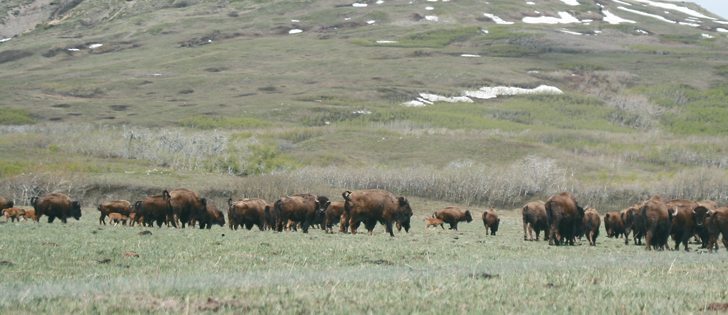The most recent edition of the Canadian Veterinary Journal contains an observational study of bison mortality on 26 bison herds in Saskatchewan.
One of the study’s primary objectives was to describe the risk of malignant catarrhal fever in the province’s bison population.
MCF is caused by a viral infection from the ovine herpesvirus-2 virus. It can be carried by healthy sheep and possibly goats but can sometimes have lethal consequences when transmitted to cattle or bison.
Many large outbreaks of MCF in farmed bison have been described in the past and are often associated with exposure to sheep.
Read Also

Breaking down successful winter feeding into six steps
It’s that time of year when it is important to start planning for a cow herd’s winter feeding program. Here are six steps I think are necessary to consider when getting your feed tested.
The exact mechanism of transmission is not clear, but it would appear that direct contact with sheep is not always necessary. Airborne transmission of viral particles, contaminated feed or water or perhaps other sources such as wild birds may help to explain why bison herds without direct contact with sheep sometimes have outbreaks of this disease.
Unfortunately, the disease has created conflicts between bison and sheep producers and has led to calls to legislate the distances for segregating newly established farms.
This study hoped to report the risk of MCF deaths as well as other causes of bison mortality and to examine differences in bison herds that were located near sheep herds versus those located farther away.
Six of the 26 herds in the study were within one kilometre of a sheep farm, and these were designated as the high exposure group. Nine herds were one to 5.6 km away (low exposure) and 11 herds were more than 5.6 km away (negligible exposure).
Seventy-six dead bison were examined, although herd owners reported an additional 57 mortalities that were not examined. A total of 1.1 percent of the bison died from a variety of causes during the study period.
Malignant catarrhal fever was a relatively rare event and was diagnosed in only two of the high risk herds. Within these two herds, the risk of an MCF mortality was .2 percent and .6 percent, which is also quite low.
The disease accounted for 9.2 percent of the mortalities examined in this time period, and no large outbreaks occurred.
MCF was not diagnosed in herds within the low exposure or negligible exposure groups.
The study noted that exposure to the virus is obviously a factor that could potentially influence whether clinical MCF occurred on a farm.
However, stress that precipitates clinical symptoms resulting in death could also be a factor.
The study found that the three most commonly reported causes of death for calves and adult bison were non-infectious problems associated with calving, nutrition and trauma.
Copper deficiency was noted as a widespread problem: half of the dead bison were identified to be deficient.
These results are similar to recent studies in the beef cow population. Even if copper deficiency was not the primary cause of death, it could contribute to other problems and potential production losses.
Dr. Tasha Epp, Dr. Cheryl Waldner and Dr. Murray Woodbury from the University of Saskatchewan’s Western College of Veterinary Medicine conducted the study, which described the causes of death in farmed bison over 18 months from Dec. 1, 2012 to May 31, 2014. Herds were recruited to participate in the study through the Saskatchewan Bison Association, the Canadian Bison Association and local veterinarians.
Herd owners contacted local veterinarians to perform post-mortems when animals died, and the samples were submitted with a detailed history to Prairie Diagnostic Services for examination by a pathologist and diagnostic tests.
Owners also completed a final post-study survey to confirm demographic information about the herd, total deaths on the farm and proximity to sheep operations.
The study will provide valuable information for bison and sheep producers as well as legislators.
Like all scientific studies, it has limitations and will not answer all the questions about this controversial disease.
The study was funded by Saskatchewan Agriculture and will undoubtedly play an important role in future decisions about how to help bison and sheep producers exist in harmony.















